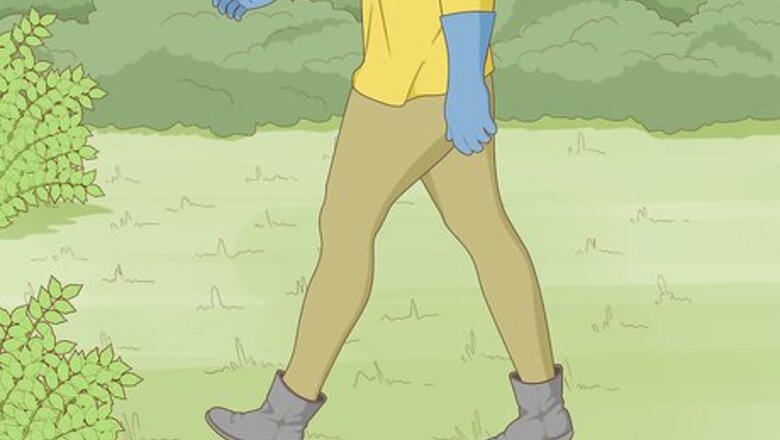
views
X
Trustworthy Source
Mayo Clinic
Educational website from one of the world's leading hospitals
Go to source
To get rid of poison ivy plants, you can cut or pull them up, but it’s important to keep your skin covered and dispose of the plants carefully. Another option is to use natural or chemical herbicides to kill poison ivy. Once you’ve eliminated the plants, prevent regrowth by working the soil often, smothering the area with mulch, and planting grass to discourage new poison ivy plants from growing.
Handling Poison Ivy Safely
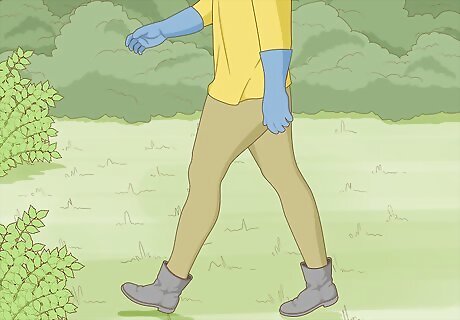
Wear long sleeves, pants, boots, and heavy-duty rubber gloves. Even a small amount of urushiol from poison ivy leaves or stems can cause a reaction depending on how sensitive you are to it. In some people, the rash can be quite severe, so it’s best to err on the side of caution and cover yourself up completely with a long-sleeved shirt, pants, socks, closed-toed shoes, and rubber gloves. You can also cover your hands and arms with bread bags as an extra precaution if you plan to pull the plants up by hand. For extra security, use duct tape to close any gaps between your sleeves and gloves or your pants and socks.Tip: Cover your shoes and the lower half of your pants with garbage bags. Then, carefully turn the bags inside out and throw them away after you finish pulling up the plants since it can be difficult to wash your shoes to remove the toxins.
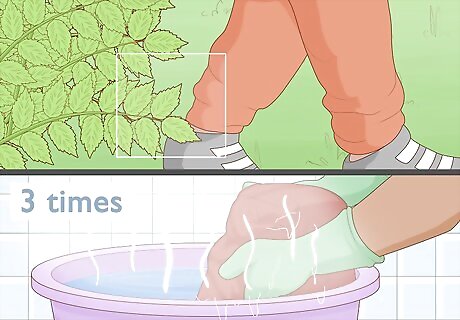
Wash any clothing that comes into contact with poison ivy. After you finish handling the poison ivy plants, carefully remove your clothing and place it directly into a washing machine alone. Don’t place these items in a hamper or wash them with your normal laundry. Wash the items 3 times on the hot water setting and with laundry detergent. If possible, wash your shoes as well. If you can't wash your shoes, be sure to cover them while you're working near the poison ivy so the toxins don't transfer to them. If you cannot wash the items right away, place them into a garbage bag and mark the bag clearly to indicate what’s in it. Then, wash the items separately from your other laundry when you’re able. It’s crucial to wash the items thoroughly because urushiol from the poison ivy can still cause a rash even years later.
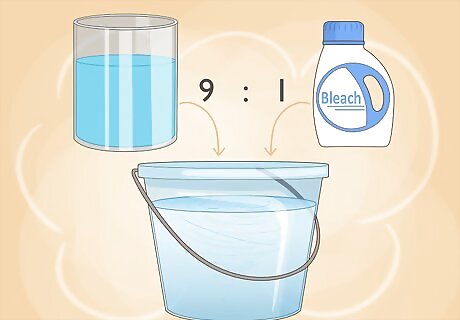
Clean and disinfect any gardening tools you used on the poison ivy. After you finish cutting and digging up the poison ivy, spray them with a hose outside to clean them. Place them on the ground away from people to do this, such as on a patch of concrete or grass. Then, dip them in rubbing alcohol or a mixture of 1 part bleach to 9 parts water to disinfect them and remove any remaining urushiol. Let the tools air dry outside before putting them away. Make sure to wear rubber gloves when handling the garden tools. Urushiol from the tools can get onto your hands and cause a reaction.
Cutting Poison Ivy Plants
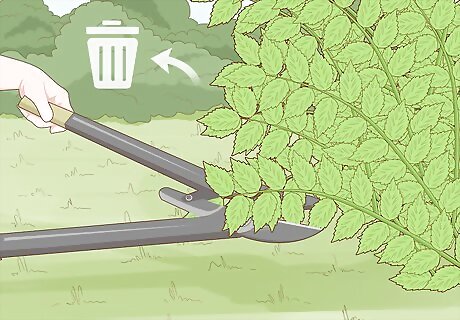
Cut the plants close to the ground and put them right into a garbage bag. If you want to cut down large plants before getting rid of them, start by using a pair of garden shears to cut the plants as close to the ground as you can. This will cause the plant to die, and you can easily pull it away from the other plants in the area and dispose of it. Make sure to put the plants into a garbage bag immediately to prevent the oil from getting on other plants and surfaces. Keep in mind that the plant is still covered in urushiol even after it dies, so it’s important to use caution when you remove it. Don’t let any part of the plant come into contact with your skin. If at all possible, remove the roots as well. The more you get rid, the less it will come back. If you want to also take care of the environment, use a compostable paper bag instead of a garbage bag. That said, make sure to have somewhere you can put it that's not going to touch anything else.
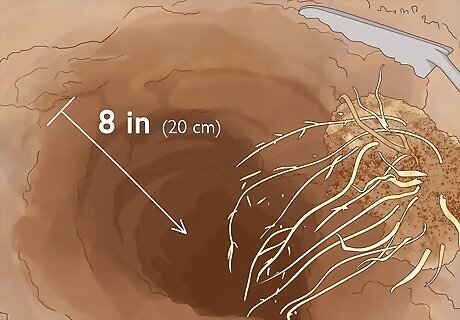
Dig up the roots to prevent them from growing back. After you finish cutting the plants, you can use a shovel or pitchfork to loosen the soil at the base of the plant. Dig down to a depth of about 8 in (20 cm) to access the plant’s roots, and then use the shovel or pitchfork to remove them. Put the roots with the other parts of the plant for disposal. Use the same precautions when digging up the roots as you do for the rest of the plant. The roots also have urushiol on them.
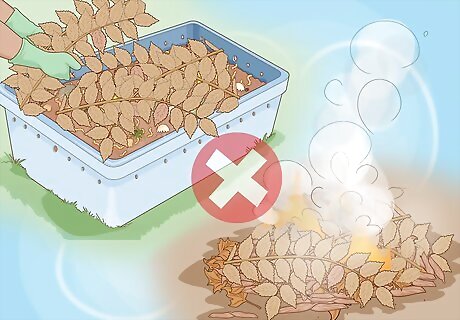
Dispose of the plants away from where people might encounter them. You can bury the plants 30 cm (12 in) deep in the ground to keep them from creating a hazard to people in the area. Another option is to place them into a large, heavy-duty garbage bag and attach a tag or label to indicate the contents of the bag. For example, write “poison ivy” on a white, adhesive label and stick it onto the bag. Dispose of the bag with the rest of your garbage. Never burn poison ivy plants! The smoke is toxic. Do not add poison ivy plants to compost.
Using Herbicides to Kill Poison Ivy
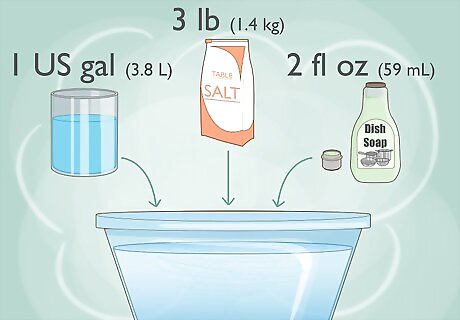
Mix salt, vinegar, water, and dish soap for a natural herbicide. If you’d rather not use chemicals to kill the poison ivy plants, you can make a natural herbicide. Combine 3 lb (1.4 kg) of regular table salt with 1 US gal (3.8 L) of water and bring it to a boil. Stir until the salt is completely dissolved in the water and allow the mixture to cool. Then stir in 2 fl oz (59 mL) of dish soap and transfer the liquid to a spray bottle. You can also transfer the liquid into a bucket and paint it onto the leaves with a paintbrush if you don’t want to accidentally kill other plants.
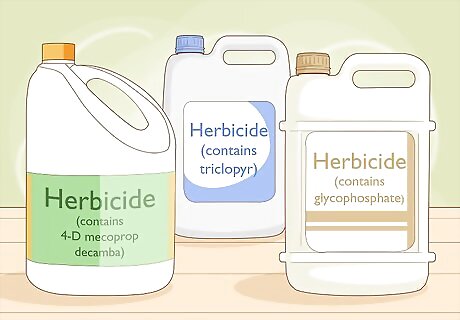
Use a chemical herbicide for a stronger option. Look for an herbicide that contains triclopyr, 2,4-D mecoprop decamba, or glycophosphate. These are powerful chemical agents that will kill the poison ivy as well as any other plants that you apply it to.
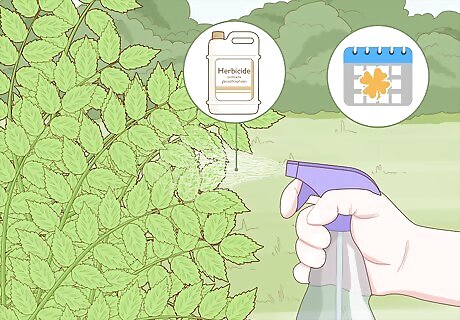
Apply the herbicide in the spring or early summer on a clear day. The herbicide needs to stay on the plant to work, so don’t apply it right after before it rains. Wait for a clear, dry day to apply the herbicide. Then, spray the plants that you want to kill. Make sure to spray every part of the plant, from the leaves to the roots. Follow the herbicide manufacturer's instructions carefully to ensure safe and effective use of the product. If you want to protect nearby plants, use a paintbrush to apply the herbicide to each leaf individually. Throw away the paintbrush after you finish using it.Tip: Apply the herbicide late in the evening to reduce the impact on pollinating insects, such as honeybees and bumblebees, which are most active during the morning and daytime hours.
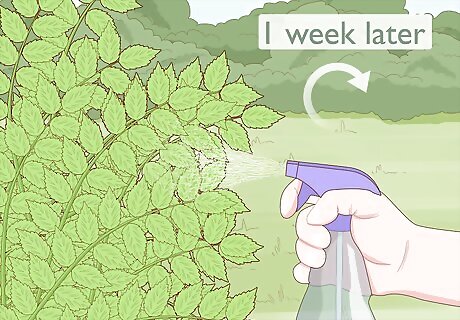
Repeat the herbicide application in 1 week if the plant still has not died. It can take multiple applications of herbicide to kill the poison ivy. Check the plants in 1 week, and if they’re not dead, apply the herbicide again in the same way as you did the first time.
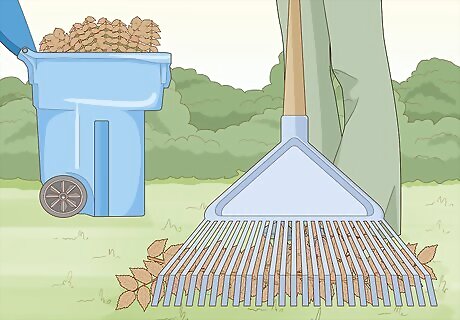
Dispose of the plants once they die. The plants will turn brown and crumble after applying the herbicide. Rake up the remains of the dead plants and throw them away in garbage bags. Make sure to label the garbage bags to indicate their contents and throw it away with the rest of your garbage. Wear protective clothing while you collect the plant’s remains.
Preventing Poison Ivy from Growing Back
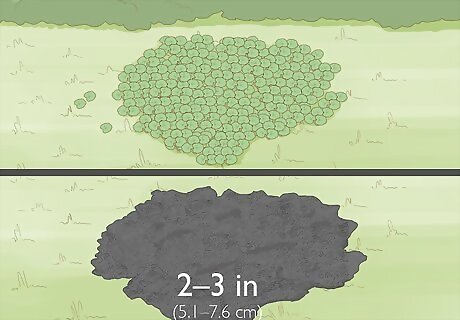
Cover new growth with mulch to prevent it from getting bigger. Mulch will smother any new poison ivy seedlings that start to grow after you kill the older plants. Apply a 2–3 in (5.1–7.6 cm) layer of black mulch over the entire area where you’re concerned about poison ivy growing. You can also use newspaper, plastic, cardboard, and hay to cover the area if preferred. Keep in mind that covering the area with mulch or something else will likely kill any grass and other plants that are growing there.
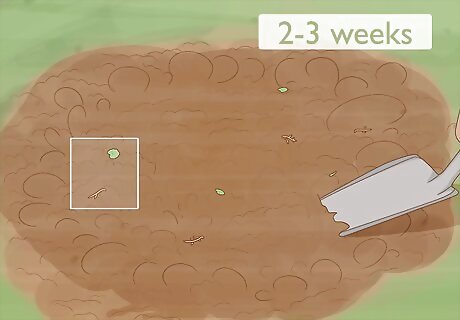
Work the soil to dig up seedlings before they can develop. The more often you dig in the soil, the less likely it is that the poison ivy will return. Till the soil once every few days for 2 to 3 weeks after you kill the poison ivy. If you spot any seedlings sprouting up in the area where there was poison ivy, dig them up and dispose of them immediately. Make sure to use the same precautions when handling poison ivy seedlings as a mature plant, such as wearing long-sleeves, gloves, and closed-toed shoes.
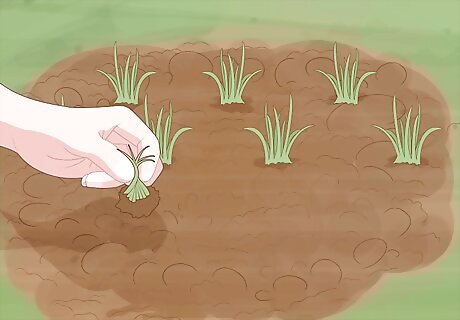
Plant grass to prevent poison ivy from growing back. Grass will take over the area and prevent poison ivy from growing back, so this might be a good way to control poison ivy long term. If you have a section of your property where poison ivy is a problem, consider planting grass seeds in that area.Tip: It takes a few weeks for grass to grow and fully develop, so you’ll still need to control poison ivy in that area during this time, such as by cutting it down or using herbicides.
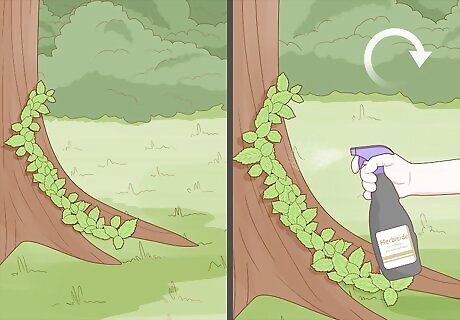
Watch for poison ivy to return and repeat the treatment if it does. Even after digging up poison ivy or using herbicides, the plant can still return. Be on the lookout for new growth and retreat the area by removing the plants manually or by applying herbicides. Some characteristics of a poison ivy plant include: A vine with groups of three pointy leaves, one of which is longer than the two beside it. The leaves are green during the summer and red, yellow, or orange during the fall. No thorns on the stem. Berries, if present, are a greyish-white or cream color. Growing as a vine, ground cover, or large shrub. The prominent characteristics of poison ivy are its coarsely-toothed shiny leaves have three leaflets. The two side leaflets are attached to the midrib by very short stalks. The middle leaflet has a longer stalk. Its leaves can be reddish when young. Poison ivy's mature vines appear hairy. It has clusters of hard white fruits.










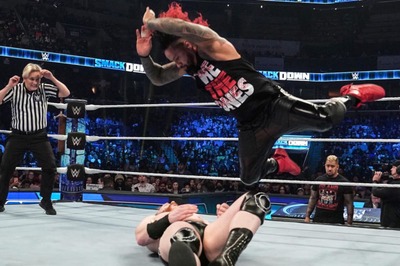

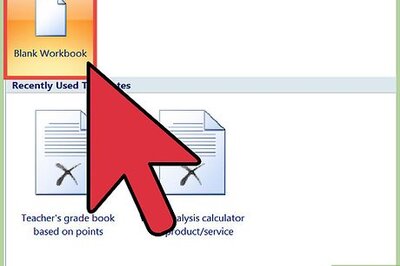

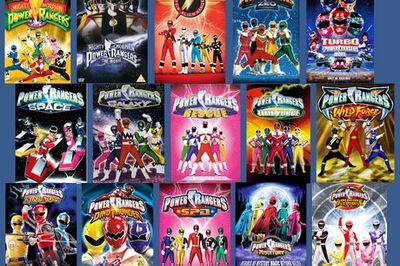
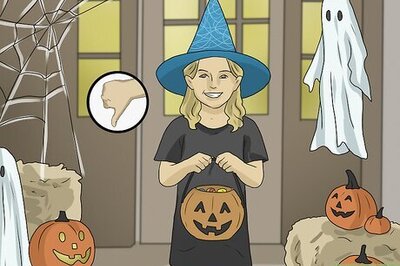
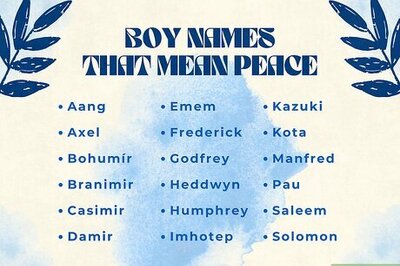

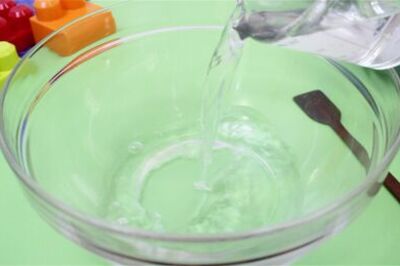
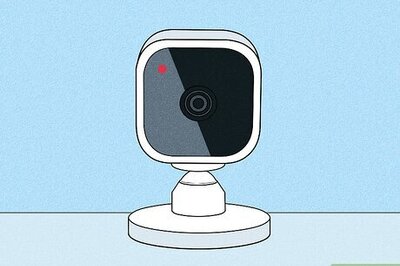
Comments
0 comment